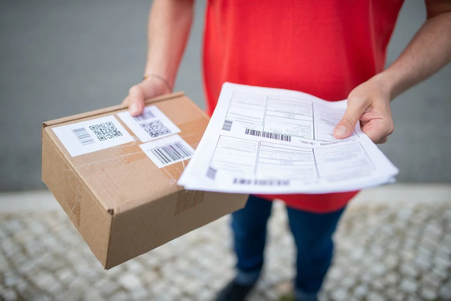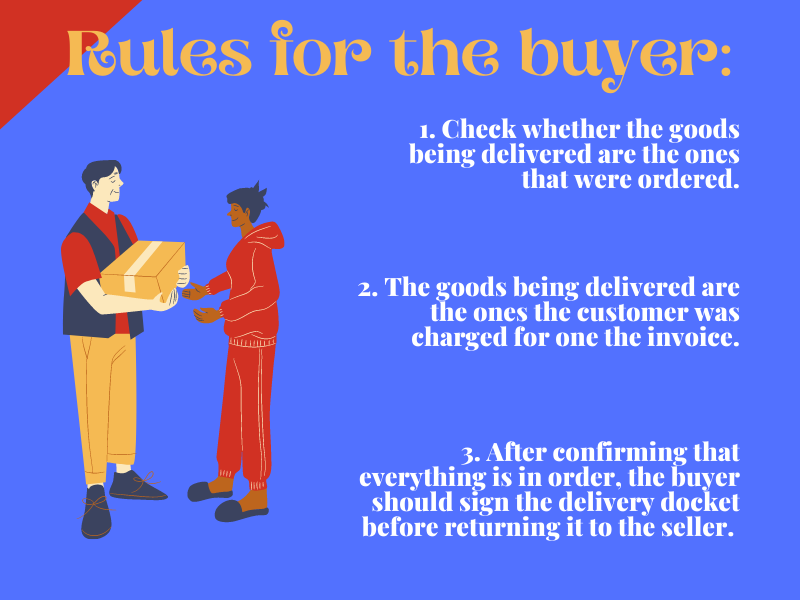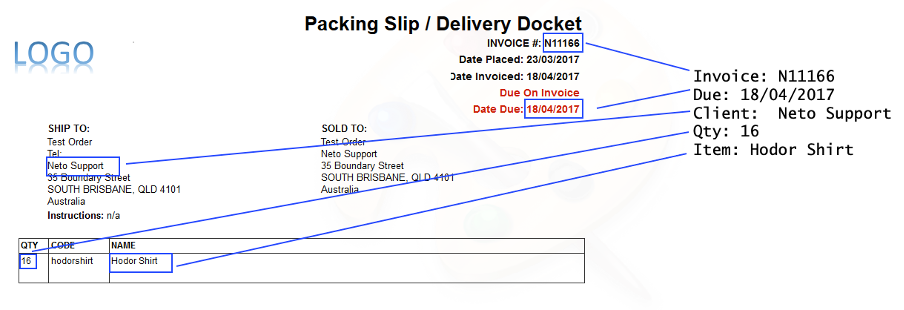
Looking for an enterprise automation solution? Look no further!
.cta-first-blue{ transition: all 0.1s cubic-bezier(0.4, 0, 0.2, 1) 0s; border-radius: 0px; font-weight: bold; font-size: 16px; line-height: 24px; padding: 12px 24px; background: #546fff; color: white; height: 56px; text-align: left; display: inline-flex; flex-direction: row; -moz-box-align: center; align-items: center; letter-spacing: 0px; box-sizing: border-box; border-width:2px !important; border: solid #546fff !important; } .cta-first-blue:hover{ color:#546fff; background:white; transition: all 0.1s cubic-bezier(0.4, 0, 0.2, 1) 0s; border-width:2px !important; border: solid #546fff !important; } .cta-second-black{ transition: all 0.1s cubic-bezier(0.4, 0, 0.2, 1) 0s; border-radius: 0px; font-weight: bold; font-size: 16px; line-height: 24px; padding: 12px 24px; background: white; color: #333; height: 56px; text-align: left; display: inline-flex; flex-direction: row; -moz-box-align: center; align-items: center; letter-spacing: 0px; box-sizing: border-box; border-width:2px !important; border: solid #333 !important; } .cta-second-black:hover{ color:white; background:#333; transition: all 0.1s cubic-bezier(0.4, 0, 0.2, 1) 0s; border-width:2px !important; border: solid #333 !important; } .column1{ min-width: 240px; max-width: fit-content; padding-right: 4%; } .column2{ min-width: 200px; max-width: fit-content; } .cta-main{ display: flex; }
A delivery docket is a formal document that accompanies the delivery of goods and is a record of the type and quantity of the item being delivered. A copy of the note is usually returned to the seller as proof of delivery. With the increasing digitization of the marketplace, automated data management of delivery dockets has assumed importance. Let us see how OCR tools can help extract data from delivery dockets.
var contentsTitle = “Table of Contents”; // Set your title here, to avoid making a heading for it later var ToC = “
“+contentsTitle+”
“; ToC += “
“; var tocDiv = document.getElementById(‘dynamictocnative’); tocDiv.outerHTML = ToC;
The importance of the delivery docket
The delivery docket or delivery note is similar to the invoice in that it contains the details of the buyer, details of the seller and the type of item being shipped. It differs from the invoice in not having any pricing information (usually). Also called a ‘dispatch note’ or a ‘goods received note’, it is issued by the seller, shipper, carrier or freight forwarder and is directed at the client and any intermediaries that are responsible for getting the product to the client.
Although there are no standard or strict rules about what a delivery docket must contain, a delivery docket typically comprises the following information:
- Name and address of the seller/supplier
- Name and address of the buyer/client
- Date of order,
- Date of shipment,
- Expected delivery date
- Order number / name
- Lists of goods included in the delivery
- Possible further deliveries e.g., delivery 1 of 3
A delivery docket may contain details like the registration number and banking information of the seller for insurance purposes or for new customers.
A valued delivery docket (or delivery note valued) may contain the pricing of the product, but such notes must be accompanied by the invoice.
The difference between a valued delivery docket and an invoice is that the former is not valid for tax purposes and is merely proof of delivery. The invoice on the other hand is used in taxation and contains tax data of the buyer and seller, the price of the products, and any applicable VAT and other taxes.
A delivery docket affords the seller a better handle on shipped products and an overview of their productivity. It helps customers (buyers) check if they have received the products that have been paid for. Often, the buyer must sign the note to let the buyer know that the delivery has been in order.

Want to scrape data from PDF documents, convert PDF to XML or automate table extraction? Check out Nanonets' PDF scraper or PDF parser to convert PDFs to database entries!
.cta-first-blue{ transition: all 0.1s cubic-bezier(0.4, 0, 0.2, 1) 0s; border-radius: 0px; font-weight: bold; font-size: 16px; line-height: 24px; padding: 12px 24px; background: #546fff; color: white; height: 56px; text-align: left; display: inline-flex; flex-direction: row; -moz-box-align: center; align-items: center; letter-spacing: 0px; box-sizing: border-box; border-width:2px !important; border: solid #546fff !important; } .cta-first-blue:hover{ color:#546fff; background:white; transition: all 0.1s cubic-bezier(0.4, 0, 0.2, 1) 0s; border-width:2px !important; border: solid #546fff !important; } .cta-second-black{ transition: all 0.1s cubic-bezier(0.4, 0, 0.2, 1) 0s; border-radius: 0px; font-weight: bold; font-size: 16px; line-height: 24px; padding: 12px 24px; background: white; color: #333; height: 56px; text-align: left; display: inline-flex; flex-direction: row; -moz-box-align: center; align-items: center; letter-spacing: 0px; box-sizing: border-box; border-width:2px !important; border: solid #333 !important; } .cta-second-black:hover{ color:white; background:#333; transition: all 0.1s cubic-bezier(0.4, 0, 0.2, 1) 0s; border-width:2px !important; border: solid #333 !important; } .column1{ min-width: 240px; max-width: fit-content; padding-right: 4%; } .column2{ min-width: 200px; max-width: fit-content; } .cta-main{ display: flex; }
The challenges in manual extraction of delivery docket data
The delivery docket is usually received along with the shipment/product at the reception of a company or the warehouse, depending upon the business practices followed. In either case, the employee who receives the shipment – the front office staff, or a warehouse employee, as the case may be – must compare the details in the delivery docket with the details in the purchase order, invoice, and/or shipment package. Then, she signs the docket, if such is its nature, and files a copy of it for the company records.
This employee, most likely, has way too many tasks in her portfolio, and delivery docket management may just be the last straw that breaks her morale.
Checking the items listed in the docket with the items delivered is a one-time process, and must be performed in real-time. Archiving and filing the delivery docket is a post-delivery operation and can become tedious, boring and time-consuming. Archiving and filing are further complicated by the different formats and layouts of the delivery dockets. Delivery notes may be in the form of hard copies that are delivered by hand or by fax, email attachments or as electronic data interchange (EDI). In most companies, the data in the delivery dockets must be entered into a database, for purposes of inventory management, archiving, and audit activities.
It can be time-consuming and tedious to manually extract data from delivery dockets in these multiple formats. This often leads to errors and resulting delays in processing documents. The common challenges in manual extraction of data from delivery dockets include,
- Time consumption, especially as the company grows and the number of purchases increases.
- Too much email and paper require physical file storage and organization.
- Missing out on mismatches between data in the purchase order, invoice and delivery dockets.
- Misfiled and forgotten items; this is especially true when sellers email delivery notes as soon as the goods are dispatched. By the time the goods are received, the mail containing the delivery docket may become buried deep in the mailbox of the recipient, thus leading to confusion.
Manual data extraction from delivery dockets and their entry into a database not followed by verification steps can have error rates as high as 4%. The 1-10-100 data entry rule is well known in data entry circles – the verification of data accuracy at the point of entry costs $1, cleaning up of errors costs $10 in batch form, and uncorrected errors cost the company $100 or more.
Delivery Dockets OCR
Data extraction software can be used to selectively extract data from delivery dockets. Optical character recognition or OCR, software that extracts data from scanned documents, camera images and image-only pdfs, is best suited for the automated extraction of data from delivery dockets.
There are many types of OCR software that are used in data extraction in the industry today. The most rudimentary type simply extracts all the text from the delivery document and further categorization and meaningful data extraction needs human effort.

The second generation of OCR – Zonal or Template-based OCR – extracts specific data from the delivery document, depending on its position or “zone” in the document.

Third generation OCRs such as Nanonets use AI and ML capabilities to intelligently extract meaningful information from the delivery notes. These cognitive OCR tools are capable of learning new formats and styles of delivery dockets with use and thus minimise human intervention.

A good delivery docket OCR must have the following features:
- The capability of extracting data that may be structured, poorly structured and/or unstructured in the original delivery docket. The coherence of data extracted from these various sources is enabled by the use of AI-based data extraction.
- The capability of converting the extracted data into multiple readable/editable formats for subsequent use.
- Data security – the product purchased by a company can be highly sensitive and confidential as it may be part of patented and trademarked processes of the company. The data extraction software must be able to ensure safeguarding the data from theft, hacking, and mismanagement.
Want to automate repetitive manual tasks? Check our Nanonets workflow-based document processing software. Extract data from invoices, identity cards or any document on autopilot!
.cta-first-blue{ transition: all 0.1s cubic-bezier(0.4, 0, 0.2, 1) 0s; border-radius: 0px; font-weight: bold; font-size: 16px; line-height: 24px; padding: 12px 24px; background: #546fff; color: white; height: 56px; text-align: left; display: inline-flex; flex-direction: row; -moz-box-align: center; align-items: center; letter-spacing: 0px; box-sizing: border-box; border-width:2px !important; border: solid #546fff !important; } .cta-first-blue:hover{ color:#546fff; background:white; transition: all 0.1s cubic-bezier(0.4, 0, 0.2, 1) 0s; border-width:2px !important; border: solid #546fff !important; } .cta-second-black{ transition: all 0.1s cubic-bezier(0.4, 0, 0.2, 1) 0s; border-radius: 0px; font-weight: bold; font-size: 16px; line-height: 24px; padding: 12px 24px; background: white; color: #333; height: 56px; text-align: left; display: inline-flex; flex-direction: row; -moz-box-align: center; align-items: center; letter-spacing: 0px; box-sizing: border-box; border-width:2px !important; border: solid #333 !important; } .cta-second-black:hover{ color:white; background:#333; transition: all 0.1s cubic-bezier(0.4, 0, 0.2, 1) 0s; border-width:2px !important; border: solid #333 !important; } .column1{ min-width: 240px; max-width: fit-content; padding-right: 4%; } .column2{ min-width: 200px; max-width: fit-content; } .cta-main{ display: flex; }
Advantages of AI-based Delivery Dockets OCR
Some benefits of using AI-powered OCR tools such as Nanonets for data management of delivery dockets are:
- Accuracy of data: OCRs that leverage AI can minimize or even completely eliminate human errors caused by fatigue or oversight.
- Time savings: Manual data entry from delivery notes can be time-consuming, and OCRs can save much of the time spent by employees on mundane repetitive activities. AI-enabled OCR extracts relevant data from any document in 27 seconds as against 3.5 minutes for manual capture.
- Employee reorientation: The time available to the employee due to automation of delivery docket data extraction can be rerouted to productive tasks that can enhance their skill set and the company’s bottom line.
- Centralized data: The data captured by the OCR software can be stored in a centralized location and therefore will be accessible to all stakeholders of the company.
- Security of data: The possibility of introducing checks at various levels of the automation process initiated by the OCR can enhance data security.
- Scalability: As the business expands, it is cumbersome to have a manual system for invoice management. OCRs can streamline the process of delivery note management, leading to scale-up enhancements.
- Integration with other automation systems of the company. With hyper-automation slowly finding a foothold in the business sector, the use of OCR in the area of delivery docket management can help in the integration of the operation into the larger system that pervades the organization.
Want to use robotic process automation? Check out Nanonets workflow-based document processing software. No code. No hassle platform.
.cta-first-blue{ transition: all 0.1s cubic-bezier(0.4, 0, 0.2, 1) 0s; border-radius: 0px; font-weight: bold; font-size: 16px; line-height: 24px; padding: 12px 24px; background: #546fff; color: white; height: 56px; text-align: left; display: inline-flex; flex-direction: row; -moz-box-align: center; align-items: center; letter-spacing: 0px; box-sizing: border-box; border-width:2px !important; border: solid #546fff !important; } .cta-first-blue:hover{ color:#546fff; background:white; transition: all 0.1s cubic-bezier(0.4, 0, 0.2, 1) 0s; border-width:2px !important; border: solid #546fff !important; } .cta-second-black{ transition: all 0.1s cubic-bezier(0.4, 0, 0.2, 1) 0s; border-radius: 0px; font-weight: bold; font-size: 16px; line-height: 24px; padding: 12px 24px; background: white; color: #333; height: 56px; text-align: left; display: inline-flex; flex-direction: row; -moz-box-align: center; align-items: center; letter-spacing: 0px; box-sizing: border-box; border-width:2px !important; border: solid #333 !important; } .cta-second-black:hover{ color:white; background:#333; transition: all 0.1s cubic-bezier(0.4, 0, 0.2, 1) 0s; border-width:2px !important; border: solid #333 !important; } .column1{ min-width: 240px; max-width: fit-content; padding-right: 4%; } .column2{ min-width: 200px; max-width: fit-content; } .cta-main{ display: flex; }
The suitability of Nanonets as a delivery docket OCR
Nanonets is an AI-driven OCR tool that is best suited for the extraction of data from delivery dockets due to the following reasons:
- Accurate detection of the table structure of a line item containing documents like forms.
- All the line item entries that are present in the forms like name, product, quantity etc.
- The data can be extracted as JSON output that can enable the building of customized apps and platforms.
- While offering a great API & documentation for developers, the software is also ideal for organizations with no in-house team of developers.
- It is a truly no-code tool
- Easy integration of Nanonets with most CRM, ERP, content services, or RPA software.
- Multiple language processing: Nanonets OCR can recognize handwritten text, images of text in multiple languages at once, images with low resolution, images with new or cursive fonts and varying sizes, images with shadowy text, tilted text, random unstructured text, image noise, blurred images and more. This is, as can be understood, particularly relevant to deliveries between different countries or must transport goods between regions that use different languages.
- Works with custom data through the use of custom data for training OCR models.
- Independence from formats: Nanonets are not bound by the template of documents at all. You can capture data cognitively in tables or line items or any other format.
- Many data entry tools like Nanonets, come with a robust technical assistance team that can help overcome the challenges and harness the full potential of automated data entry operations.
Nanonets' intelligent document processing use cases help organizations adopt automation seamlessly. Here are some interesting case studies:
- Expatrio uses Nanonets to save 95% of time spent on manual data entry
- Advantage Marketing scales its business 5x times using Nanonets automation
Take away
Data extraction from delivery dockets can be arduous and time-consuming when performed manually. AI-driven data extraction software like Nanonets can help automate the process. The use of AI-OCR in the final step of the Procure-to-Pay workflow comes with compelling benefits such as time and cost savings, a streamlined approval process, and ultimately better bottom lines.
var contentsTitle = “Table of Contents”; // Set your title here, to avoid making a heading for it later var ToC = “
“+contentsTitle+”
“; ToC += “
“; var tocDiv = document.getElementById(‘dynamictocnative’); tocDiv.outerHTML = ToC;
Nanonets online OCR & OCR API have many interesting use cases that could optimize your business performance, save costs and boost growth. Find out how Nanonets' use cases can apply to your product.
- "
- &
- 95%
- a
- About
- accessible
- activities
- address
- against
- AI
- All
- api
- applicable
- Apply
- apps
- AREA
- audit
- automate
- Automated
- Automation
- available
- background
- Banking
- become
- being
- benefits
- BEST
- between
- border
- breaks
- Building
- business
- buyers
- capabilities
- capable
- capture
- Cards
- cases
- caused
- centralized
- challenges
- Checks
- Cleaning
- code
- cognitive
- come
- Common
- Companies
- company
- compelling
- completely
- confusion
- consumption
- contains
- content
- contents
- Costs
- could
- countries
- CRM
- custom
- Customers
- data
- data management
- data security
- Database
- deep
- delays
- delivered
- Deliveries
- delivery
- Depending
- details
- Detection
- developers
- difference
- different
- digitization
- Display
- documents
- effort
- Electronic
- eliminate
- employees
- enable
- entered
- Enterprise
- especially
- etc
- expands
- Extracts
- Features
- finding
- First
- following
- form
- formal
- format
- forms
- from
- front
- full
- further
- generation
- getting
- good
- goods
- great
- Growth
- hacking
- handle
- having
- height
- help
- helps
- here
- High
- highly
- How
- HTTPS
- human
- ideal
- Identity
- image
- images
- importance
- include
- included
- increasing
- index
- industry
- information
- insurance
- integration
- Intelligent
- intermediaries
- introducing
- inventory
- IT
- Know
- known
- language
- Languages
- larger
- leading
- Leads
- learning
- levels
- Leverage
- likely
- Line
- lines
- LINK
- Listed
- location
- Look
- Making
- management
- manual
- manually
- Marketing
- marketplace
- meaningful
- ML
- models
- Month
- more
- most
- multiple
- Nature
- Navigation
- needs
- Noise
- Notes
- number
- offering
- Office
- operation
- Operations
- Optimize
- order
- organization
- organizations
- Other
- package
- paid
- Paper
- part
- particularly
- performance
- physical
- platform
- Platforms
- Point
- portfolio
- position
- possibility
- potential
- present
- price
- pricing
- process
- Process Automation
- processes
- processing
- Product
- productivity
- Products
- proof
- purchase
- purchased
- purchases
- purposes
- Rates
- real-time
- reasons
- received
- recognize
- record
- records
- Registration
- relevant
- require
- responsible
- resulting
- Robotic Process Automation
- rpa
- rules
- seamlessly
- seconds
- sector
- security
- Sellers
- Services
- set
- shipped
- sign
- Signs
- similar
- Software
- solid
- solution
- some
- specific
- standard
- storage
- streamline
- streamlined
- structured
- studies
- system
- Systems
- tasks
- tax
- Taxation
- Taxes
- team
- Technical
- The
- theft
- therefore
- Through
- time
- time-consuming
- Title
- today
- tool
- tools
- trademarked
- Training
- transition
- transport
- types
- typically
- understood
- us
- use
- usually
- valued
- various
- Verification
- What
- WHO
- Your













